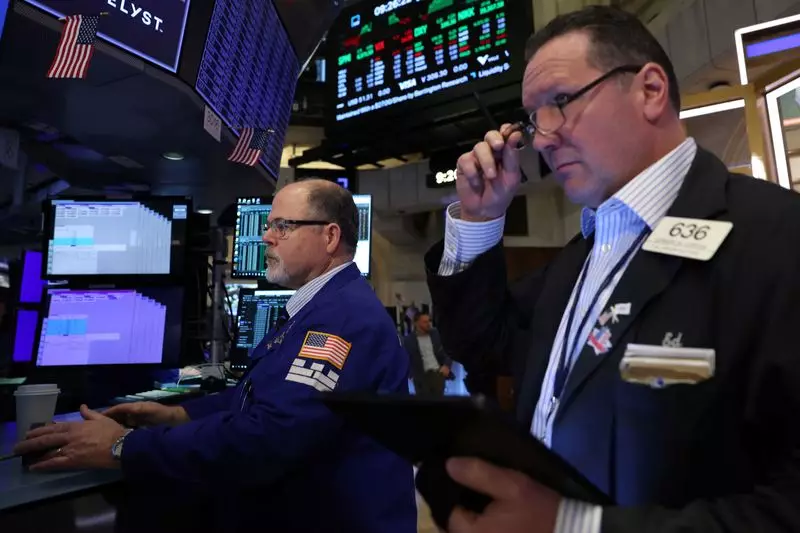As we transition into the new fiscal year, U.S. stock index futures are showing a slight upward trend, signaling a cautious optimism among investors. Observing an early morning rise, futures for major indexes like the Dow, S&P 500, and Nasdaq have gained ground as market participants prepare for crucial economic indicators and policy implications following the election of Donald Trump. The intricate dance between investor sentiment and economic data remains critical, particularly as the new administration prepares to take office.
Despite the initial positive movement in futures, Wall Street kicked off this year on a disappointing note. All three major stock indexes witnessed declines, contradicting the customary rally expected during the last stretch of December and the opening days of January. Although Dow E-minis rose by 85 points (0.20%), and S&P 500 and Nasdaq futures also posted gains, the prior losses remain a point of concern. As earnings reports loom, market participants are left to grapple with the implications of these early trends on the overall performance of U.S. equities.
A closer examination of index movements reveals that technology stocks, which typically drive market rallies, faced significant downturns. This sector, integral to the market’s previous success, is now burdened by apprehensions over uncertain policy transformations likely to stem from the upcoming administration. As investors await more definitive data, the paradox of a potentially lucrative year juxtaposed against immediate downturns emerges starkly.
The incoming presidency of Donald Trump effectively alters the dynamics of U.S. economic policy. With a firm Republican majority in Congress, Trump’s agenda promoting reduced corporate taxes, regulatory relaxations, and tariffs could reshape the landscape for corporations and investors alike. While these measures bear the promise of burgeoning corporate profitability, they also harbor the potential for rising inflation and a change in the pace of monetary policy easing.
The yield on the 10-year Treasury note has remained firmly near the psychological threshold of 4.5%. This stability may suggest traders’ anticipation of a shift in monetary policy as the Federal Reserve navigates an evolving economic landscape. Notably, data from the CME Group indicates a possibility of interest rate reductions by approximately 50 basis points this year, reflecting an underlying resilience in economic signals.
As the market awaits critical economic reports, the ISM’s manufacturing activity report for December is poised to garner a significant amount of attention. This report, along with the anticipated employment figures set to be released next week, will afford investors insights into the economic robustness. The remarks from Richmond Fed President Thomas Barkin are also poised to shape market expectations regarding the economy’s trajectory in 2021.
On a broader scale, the looming quarterly earnings reports are likely to function as a litmus test for the sustainability of the two-year-long bull market. Given that equity valuations are stretching, a significant recalibration may occur if corporate performance does not align with investor expectations.
In the premarket trading atmosphere, certain U.S. stocks garnered notable movements. Tesla’s shares rose by 1.1%, attempting to recover from a steep decline of over 6% following lukewarm quarterly delivery figures. Conversely, U.S. Steel shares plummeted by 8.2% as President Joe Biden made a decisive move to block Nippon Steel’s proposed acquisition of the company, raising questions regarding future mergers and industry consolidation. In contrast, Block’s stock rose by 2.8%, fueled by an upgrade from Raymond James, showing that some sectors continue to attract positive investor sentiment.
As the market gears up for the trading day, a subdued trading volume is expected, particularly following the New Year holiday. The blend of anticipation surrounding economic reports, potential policy changes, and the varied performance of key stocks illustrates an intricate landscape where investors must remain vigilant. As 2021 unfolds, the duality of opportunity and uncertainty will reign over U.S. markets, compelling investors to adapt to a rapidly evolving economic environment.

